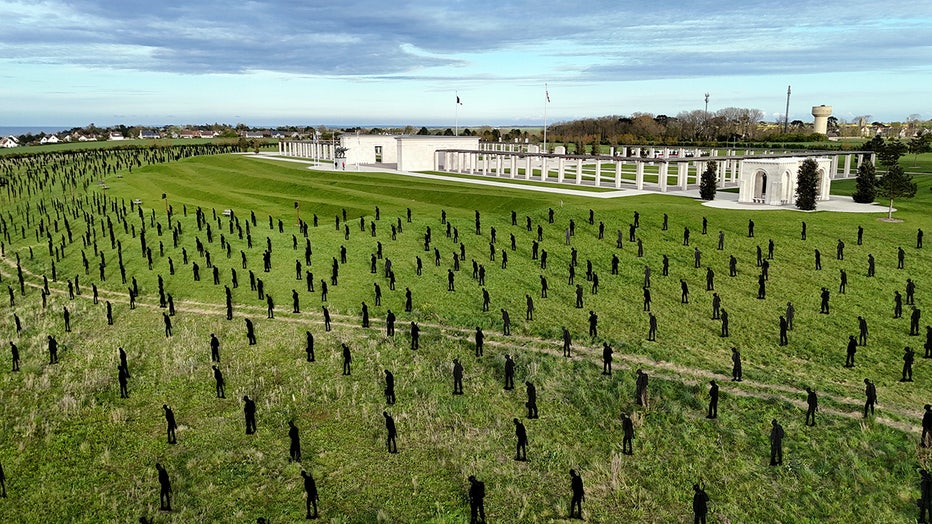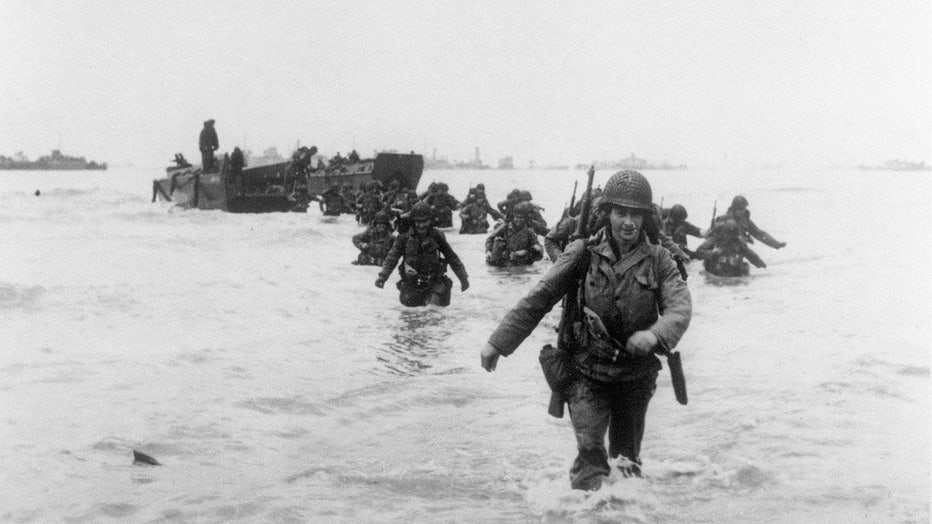Haunting art installation marks D-Day anniversary: See the pics
The sun sets behind the 'Standing with Giants' installation displayed at the Normandy British Memorial ahead of the 80th D-Day anniversary on June 02, 2024 in Ver-sur-Mer, France. (Photo by Christopher Furlong/Getty Images)
VER-SUR-MER, France - The eyes of the world are once again on the northern coast of France, where thousands of people, from politicians to centenarian soldiers, are pausing to remember the D-Day invasion.
A variety of ceremonies and displays are planned for what is certain to be an emotional day on June 6, the 80th anniversary of the invasion. But one of the most striking memorials has been in place for several weeks.
The "For Your Tomorrow" display features hundreds of two-dimensional statues designed to create silhouettes. The figures – 1,475 in total – reflect the number of servicemen who died under British command on D-Day.
The display was created and installed by a group called Standing with Giants, a British charity that has been creating similar installations to honor soldiers for several years.
"Our ethos at Standing with Giants is to value life, to understand and appreciate why we have our freedom, and to remember and pay tribute to those who have fallen so we can live the lives we have today," founder Dan Barton explained. "Standing with Giants is a great way of using art to do this."

A view of the Standing with Giants silhouettes which create the For Your Tomorrow installation at the British Normandy Memorial, in Ver-Sur-Mer, France, as part of the 80th anniversary of D-Day. (Photo by Gareth Fuller/PA Images via Getty Images)
"For Your Tomorrow" will be open to the public to visit and reflect at the British Normandy Memorial in Ver-sur-Mer, France through the end of August.
What is D-Day?
What is D-Day? An explainer on the massive WWII invasion of Normandy
On June 6, 1944, the largest air, land and sea invasion in military history took place on the Normandy coast of France.
June 6, 1944 was the day that 150,000 Allied troops crossed the English Channel into occupied France and began the invasion that would ultimately dislodge the Nazis and lead to an end to World War II.
The 50-mile stretch of Normandy coast was divided into five landing zones: Gold, Juno, Sword, Utah, and Omaha beaches. The Americans were assigned to land at Utah and Omaha, the British at Sword and Gold, and the Canadians at Juno.
The invasion began at 6:30 a.m. local time with paratroopers, followed by amphibious landings. Allied troops managed to capture the beaches and move inland despite relentless German fire that ultimately claimed 4,414 Allied lives and left another 5,000 wounded.

American troops of the 4th Infantry Division ("Famous Fourth") land on Utah Beach 06 June 1944 while Allied forces storm the Normandy beaches on D-Day. (STF/AFP via Getty Images)
RELATED: He was the first American to storm the beaches of Normandy on D-Day
By the end of August 1944, Paris was liberated and the Nazis had been expelled from northwestern France. This led to the Allied troops later entering Germany, where Soviet troops were advancing in the east.
On May 8, 1945, the Allies would formally accept Nazi Germany's unconditional surrender. Victory in the Pacific – and an end to the war – would follow a few months later.

